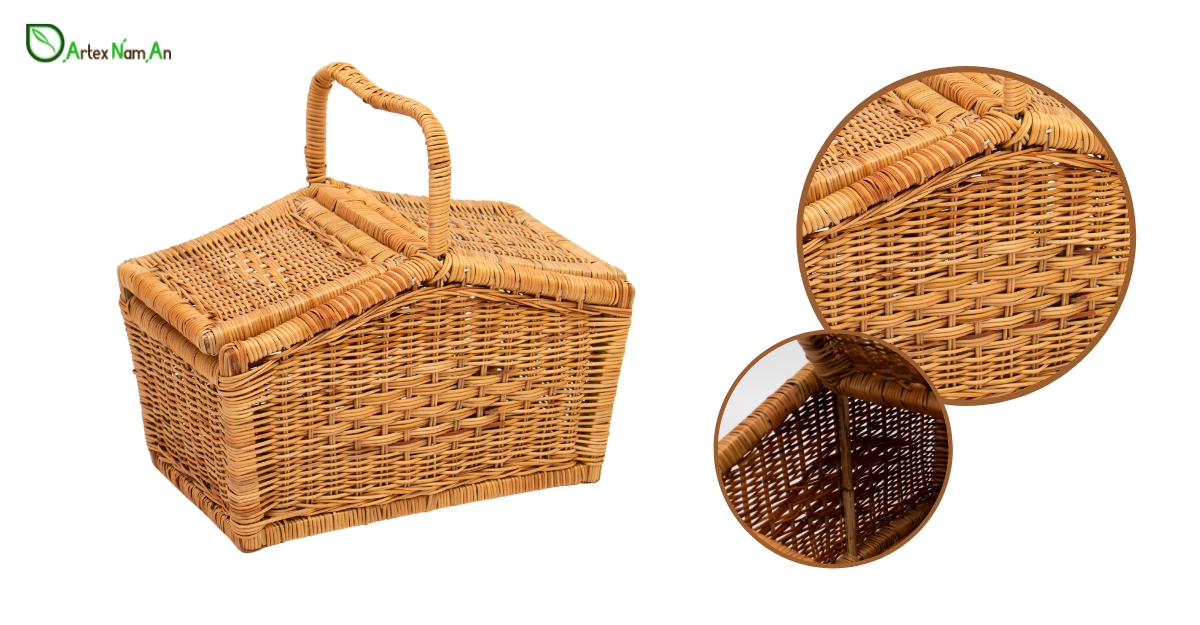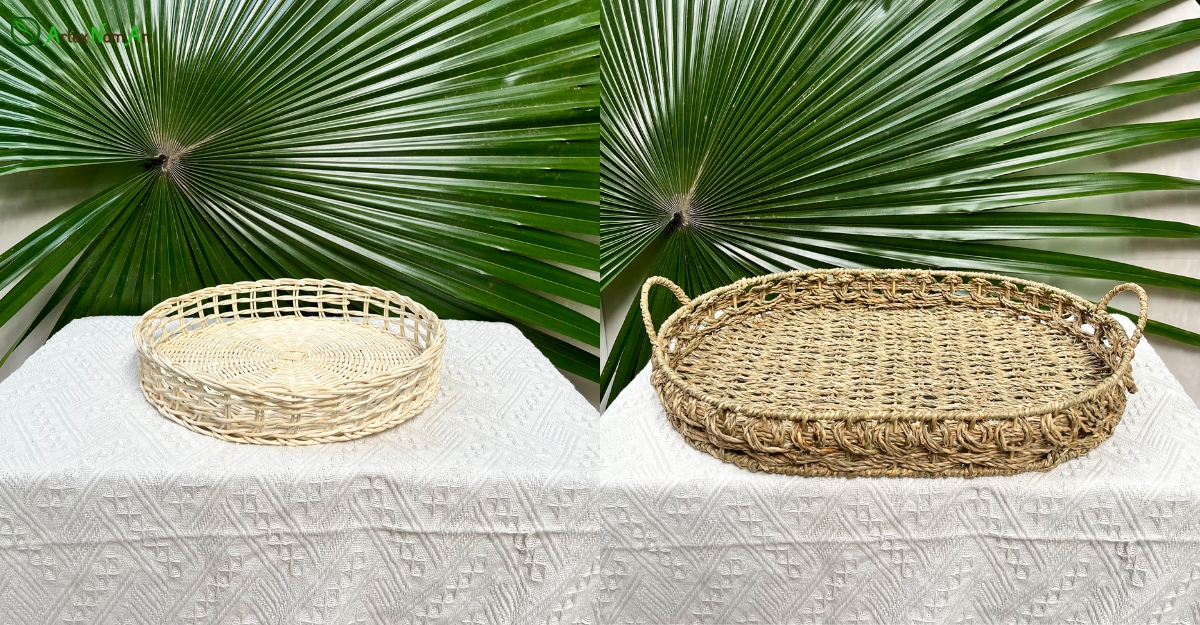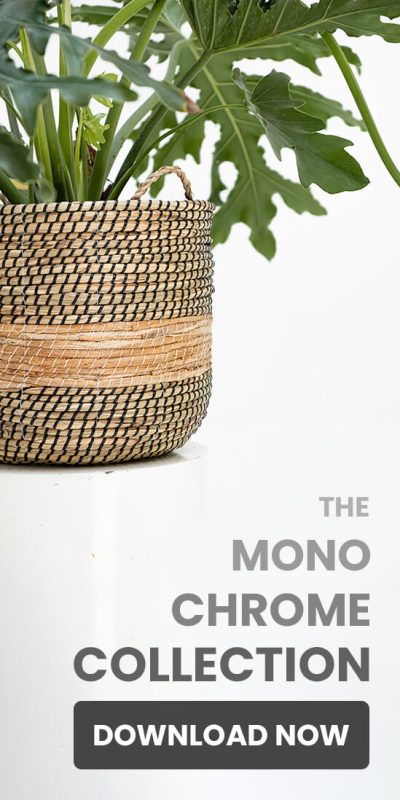Although it is a wild plant growing abundantly in mountainous areas, Fern is a durable and flexible weaving material in itself, not to mention its undeniable economic value. These characteristics make it an opportune medium to weave into wholesale picnic baskets and many home decor items. Let’s dive into the distinctive qualities of Fern!
What Is Fern as Weaving Material?
Guot grass, also called “co te” in Vietnamese, is a wild plant (a species of fern) that thrives mostly in tropical climates, particularly in the Northern mountainous provinces of Vietnam. Several provinces renowned for high-quality ferns, such as Yen Bai, Lang Son, Cao Bang, and Bac Can, can be mentioned. This tough plant can survive in drought conditions, and withstand in humid climates.

Ferns have a naturally bright green lustre and smooth finish. Commonly starting between April and June every year, ferns emerge from the ground and reach their full height of 30-60cm, even larger ones can grow to approximately 1.5m. When wither, fern stems possess a natural reddish brown and a pleasant fragrance. Durability and flexibility are also a big plus to become an ideal option for Vietnam woven baskets.
Once carefully crafted, ferns retain their outstanding strength and lifespan. Thus, this material is utilized in various home decor items, namely storage woven baskets, wholesale picnic baskets, trays, lampshades, tables, cabinets, and beds.
Is Fern Similar to Rattan?
With earthy tones and woven textures, both fern and rattan have been widely used in Vietnam to produce a variety of home decor items. There are distinct differences between these two natural weaving materials, which lie most in their appearance, durability, and source areas.
At first sight, fern and rattan are quite similar due to their natural brown hue. However, if you inspect closely, you will spot obvious differences. On the one hand, Fern looks softer with a smooth surface where fibres can’t be seen. Split rattan core, on the other hand, is not as soft and may have some cracks on the surface, and you can see fibres and rough texture, depending on species and regions.

Speaking of physical properties, Fern is more durable and flexible than rattan core. When the outer skin is removed, Rattan core will become more prone to mould when exposed to humidity, and appear more brittle than fern. Fern material is less commonly used in furniture production like rattan, but primarily for crafting Home Decor items such as woven baskets, indoor planters, Lampshades, Kitchen Accessories, and many more.
In Vietnam, more than 30 species of rattan are widely distributed in the natural forests, particularly in the Northern, Central, Central Highlands, and Southern provinces. On the contrary, fern is most commonly found in the Northern mountainous areas.
| Fern | Rattan | |
| Appearance | is not as soft as fern and may have some cracks on the surface has a rough surface fibres can be seen | is not as soft as fern and may have some cracks on the surface has a rough surface fibers can be seen |
| Characteristics | Robust fibre, flexible, and light. Sturdy, more durable and flexible than rattan. | less durable and can appear more brittle than fern |
| Distribution areas (Vietnam) | in the Northern mountainous provinces of Vietnam | in the natural forests from the North to the South of Vietnam |
| Uses | wholesale picnic baskets, indoor planters, trays, lights, etc. | looks softer and glossier has a smooth surface fibres can’t be seen |
Learn more: What are Vietnam woven baskets made from?
How Is Fern Made Into Wholesale Picnic Baskets?
Harvesting Fern
According to local people, fern stems are normally harvested around September of the lunar calendar. They cut off the top branches and leave the roots so that they will grow back again in the spring. The stems which fulfil the criteria for colour, flexibility, and toughness will be sorted out for sale.
Cutting fern is the toughest task, as the growth area is often very dense, with vertical talus walls in many places. To get the long stem, local people must closely examine the plants, find the roots, and cut them close to the ground. Even worse, they may encounter snakes, centipedes, caterpillars, and bees in the bush.

Processing Ferns
During the processing stage, the most sophisticated part is stripping the outer skin from the Fern stems. Once the outer skin is smashed, it becomes such sharp pieces that material processors can get hurt when using their hands to peel. Next, they can be used as a whole or split into 3-4 smaller threads for weaving into products depending on customers’ preference.
After getting peeled ferns, material collectors must dry them completely. The fern stems are spread out in flat places that get direct sunshine for at least 3 consecutive days. Most importantly, they should be kept away from rainy weather to ensure that the structure is sturdy enough and the fern material does not discolour.
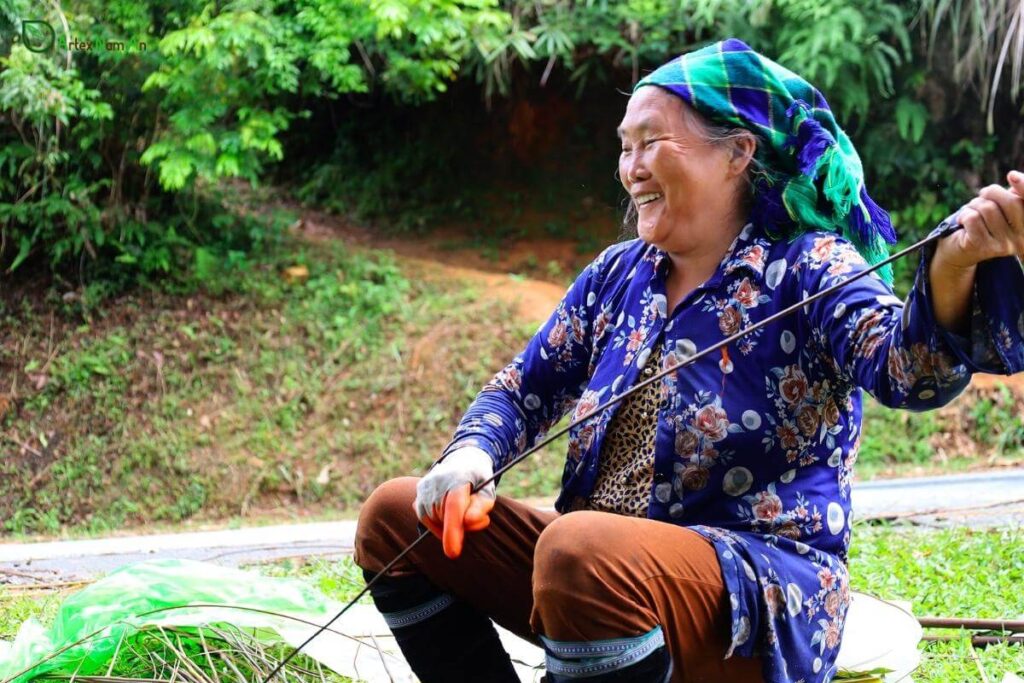
Making Baskets From Ferns
After being processed properly, fern stems are adeptly woven into wholesale picnic baskets and also other home decor items. The fern stems can be combined with other natural materials such as rattan, bamboo, seagrass, water hyacinth and corn husk to create different weaving elements and raise product value.
What if you would love to add colours to fern baskets? Local producers can dye several colours for fern stems, and apply paint coating on the outside of the baskets.
Gluing & Finishing For Baskets
In this stage, wholesale picnic baskets and other homewares are often treated with sulfur, and then dipped in glue to increase their durability and color fastness. In other cases, the products can be applied with a coat of varnish. The whole process might be repeated 2-3 more times upon request. Once dried completely, each wholesale picnic basket is liable to a final quality check before delivery.
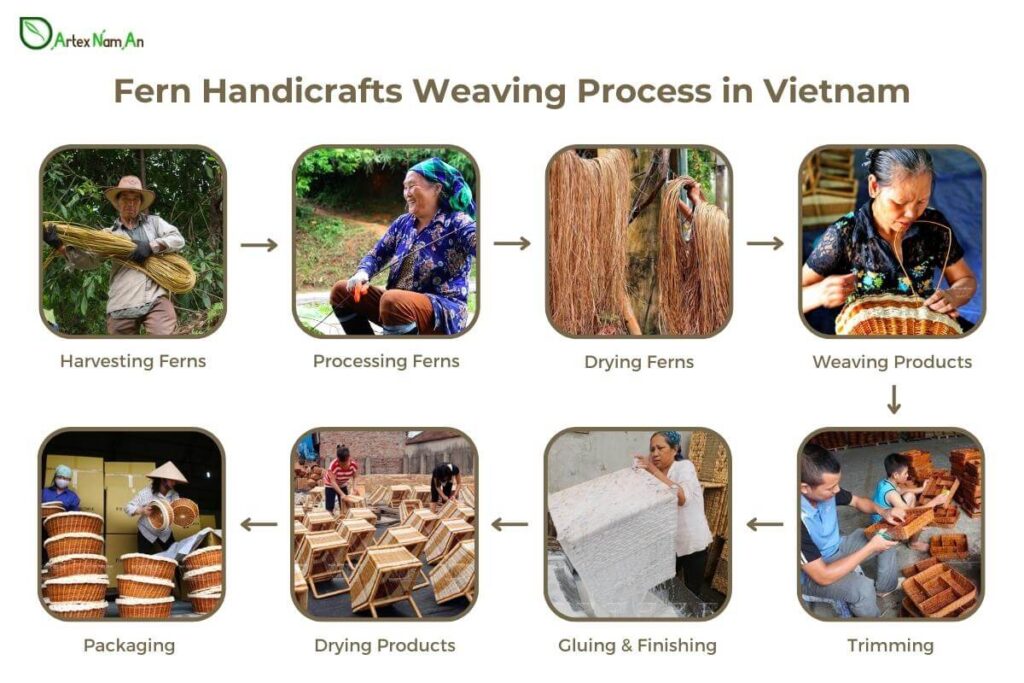
How Can Ferns Be Used In Making Homewares?
Home Decor items can be made from fern in different manners. Some uses of ferns in the production of homewares include weaving, stitching, and wrapping.
Main Material Of Weaving
Traditionally, weaving has been used to produce Home Decor (handicrafts), namely natural woven storage baskets, and many other items. This can entail the combination of fern stems and other natural weaving materials such as seagrass, water hyacinth and rattan to add value to the final product.
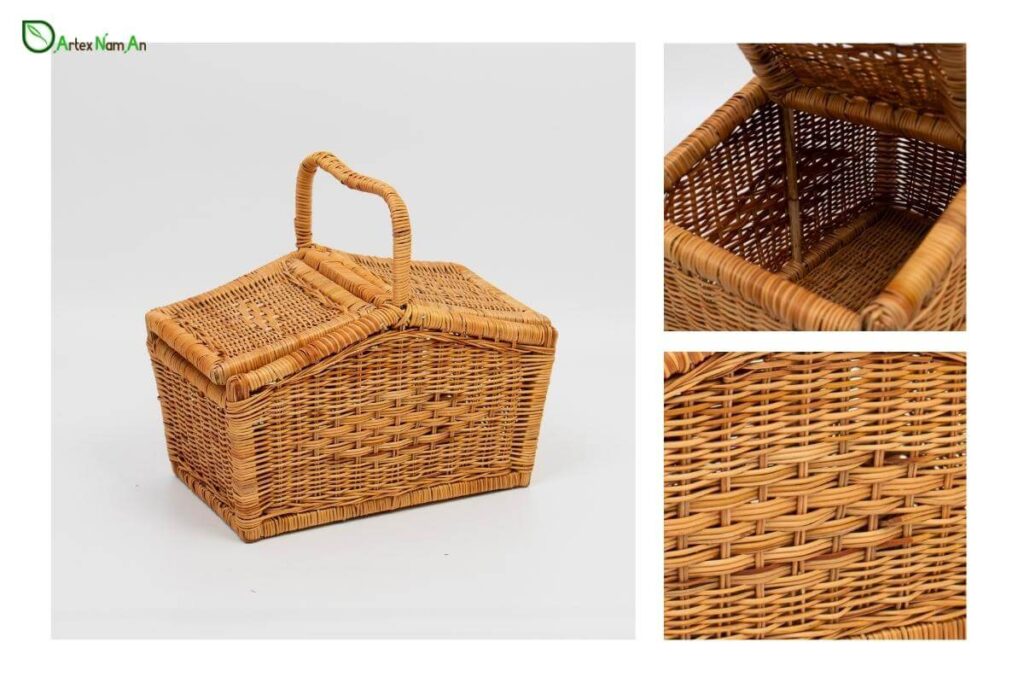
Material Of Stitching & Wrapping
Ferns are also the material utilized in producing handicrafts with the function of stitching or wrapping. With its durable and flexible property, fern is widely used in the coiling technique with rattan core. Specifically, rattan will be the core while fern works as stitching rattan together. This method can result in a tighter weave and more detailed patterns.
A variety of home decor products are produced from the coiling technique to obtain a solid, and durable structure. Several typical examples of coiled rattan with fern are baskets wholesale, utensil caddies, serving trays, and other accessories.
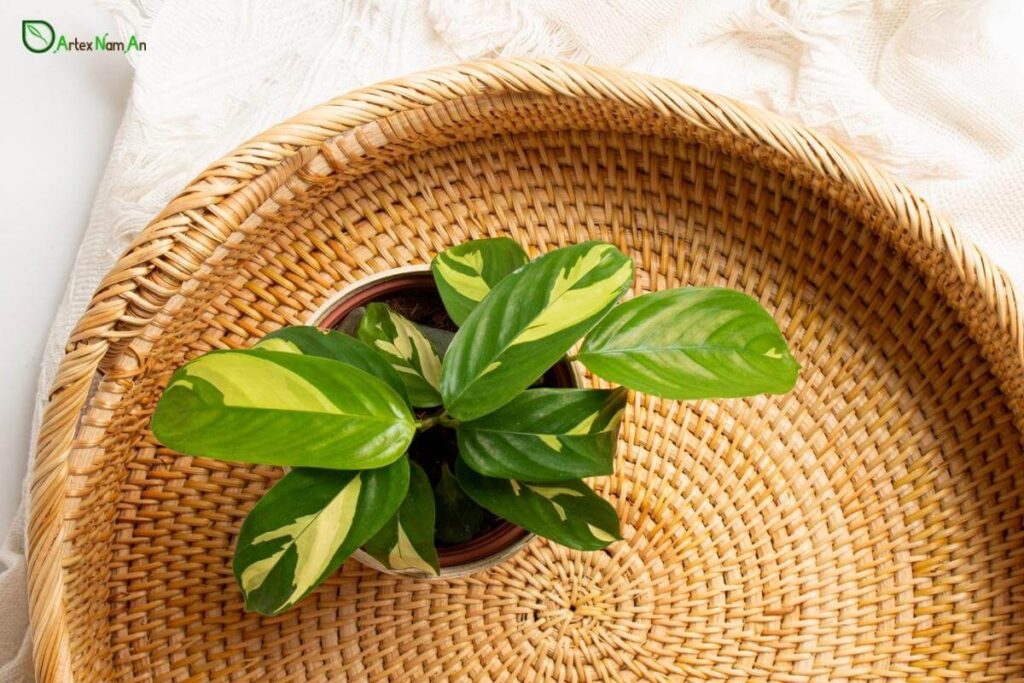
Local people also make full use of fern material – instead of rattan core – to wrap the joint, and the rim or make the handle of products such as trays and baskets. It’s because rattan core is normally more brittle, easier to break, and not getting a smooth texture.
Key Takeaways
You have just explored some unique qualities of Fern to make it a versatile material to make home decor items. Should you take an interest in natural home decor products, or would like to see more stunning products made from fern, don’t hesitate to contact us


